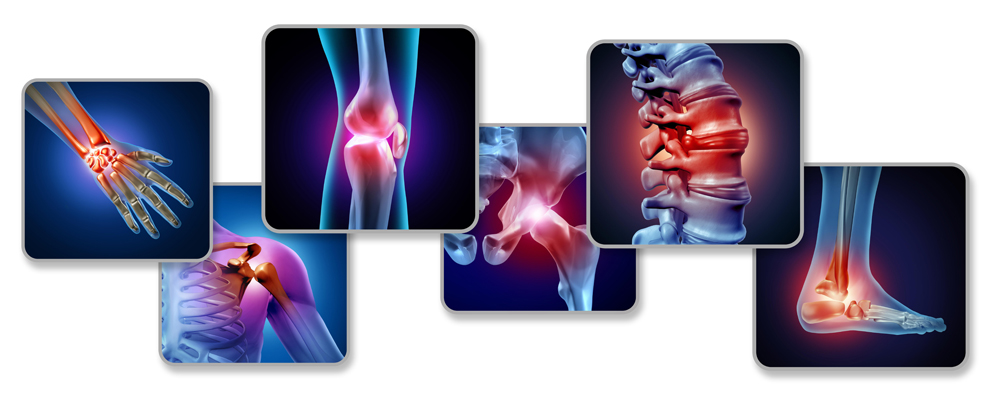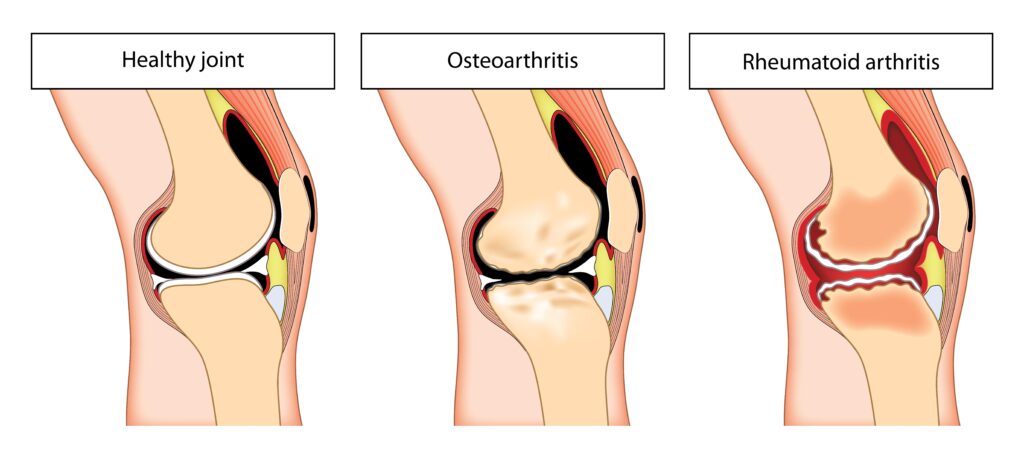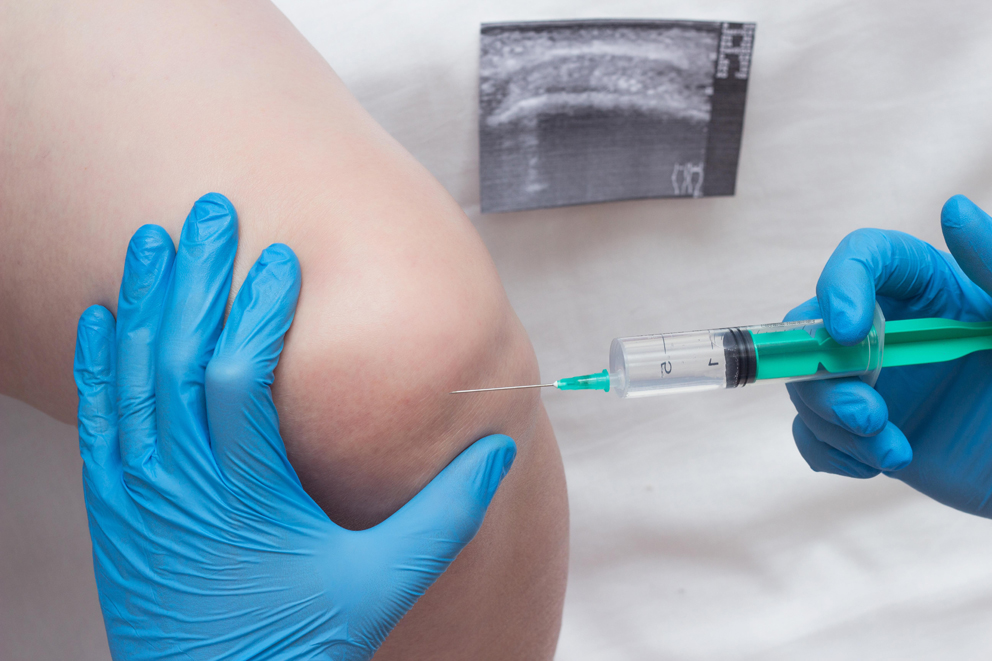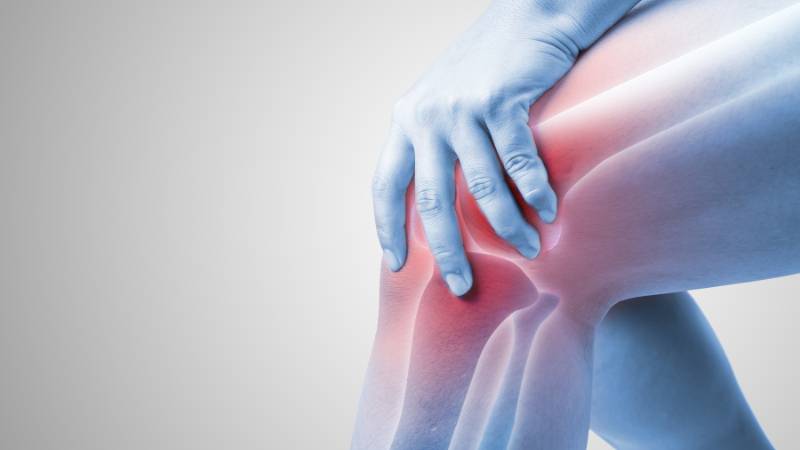Table of Contents
ToggleWhat Is a Joint?
A joint there is the area where two or more bones attach and allow your body parts to move and bend. Joints can be:
- Fibrous
- Cartilaginous
- Synova
Fibrous joints are connected by dense connective tissue rich in collagen fibers and are found for example in your skull. Cartilaginous joints are connected by cartilage allowing for some movement and include the disks between your vertebrae and the pubic symphysis in your pelvis. Synovial joints at the most common and most movable joints in your body. They contain synovial fluid and include your knees and elbows.
Joints involve:
- Muscles
- Ligaments
- Tendons
- Cartilage
- Nerves

What Is Joint Pain and What Causes It?
Since joints involved muscles, ligaments, tendons. nerves and cartilage any disease process that affects any of the structures can lead to pain. The most common cause of joint pain is osteoarthritis or degenerative joint disease. Osteoarthritis is caused by wear-and-tear of cartilage which results in bone and nerve endings being exposed causing pain. The Centers for Disease Control and prevention estimate that as many as 27 million Americans have osteoarthritis. Age and previous trauma are risk factors for osteoarthritis.

Another common cause of joint pain is rheumatoid arthritis. Rheumatoid arthritis is an autoimmune disease which occurs when the body is “tricked” into attacking its own healthy body tissues.

Imaging & Interventional Specialists – Your Non-Surgical Joint Pain Solution
Imaging & Interventional Specialists are experienced and successful in dealing with joint pain. Joint pain treatments can involve:
- Weight Loss
- Exercise
- Ergonomics
- Medications including NSAIDs
- Corticosteroid Joint Injections
- Joint Replacement
- Specialized “pinhole” procedures blocking(embolizing) the arteries supplying the inflamed joint
Our specialists will determine which treatment pathway will be best for you and work with you other health professionals to ensure you joint pain is fully addressed.
How Do Imaging & Interventional Specialists Find Out Which Treatment Is Best?
The Imaging & Interventional Specialist team will obtain your medical history, perform a physical exam, review imaging and medications, and what methods you have used in the past to attempt to deal with your joint pain. If needed we will obtain other lab tests, imaging studies including MRIs and consult with your other health providers to develop a customized treatment plan.
What Advanced “Pinhole” Procedures Does Imaging & Interventional Specialists Offer for Joint Pain?
Imaging and interventional specialists can treat your joint pain with the usual treatments that include:
- Joint Injection(Steroid and Anasthetics)
- Radiofrequency Ablation(to stop pain signals from the nerves at your problem joint)
Joint injections involve placing a tiny needle into the area of the joint causing your pain and injecting corticosteroid with local anesthetic. These can provide significant relief usually for a certain amount of time.

If joint injections give you relief, then radiofrequency ablation of the nerves in question can be considered. This involves placing a needle alongside the nerve in question. An electrical current produced by a radio wave heats up a small, precise area which blocks the nerve from transmitting pain signals. This can provide longer relief. Joints treated by radiofrequency ablation include the facet joints of the spine, sacroiliac joints and the knee.
However, there are 2 specialized “pinhole” procedures that Imaging and Interventional Specialists provide in the treatment of knee pain and shoulder pain, specifically “frozen shoulder”:
- Geniculate Artery Embolization
- Frozen Shoulder Embolization
Geniculate artery embolization involves placing a tiny catheter inside the artery feeding the inflamed part of your knee joint causing pain and introducing tiny beads that block blood supply to this area. This causes the inflammation and pain to decrease. This procedure can be used to treat knee pain after joint surgery as well.
Frozen shoulder results from inflammation, scarring and shrinkage of the capsule around the normal shoulder joint. It is also called adhesive capsulitis. Frozen shoulder embolization, like geniculate artery embolization, involves placing a tiny catheter inside your artery feeding the inflamed part of your shoulder causing pain and introducing tiny beads that block blood supply to this area. This causes decrease in inflammation and pain.
Imaging & Interventional Specialists “Pinhole” Procedures: Fast Recovery, Less Risk, Less Pain, Comfortable Setting
Our experienced board-certified specialists successfully perform “pinhole” procedures every day offering this region leading, state-of-the-art solutions to peripheral arterial disease.. Our non-surgical image guided procedures are cutting edge technology without the cutting, without the scalpel. You leave with a Band-Aid!
- Procedures are usually done in a comfortable outpatient setting with familiar friendly staff
- Pinhole procedures offer fast recovery, less risk, and less pain

Why Imaging & Interventional Specialists?
Imaging & Interventional Specialists are leaders in interventional radiology and experts in the non-surgical procedures that will address your joint pain.
Using state-of-the-art equipment, our experienced board-certified specialists are focused on your best outcome.
It is important to determine what is causing your joint pain. At IMAGING & INTERVENTIONAL SPECIALISTS board-certified physicians offer in-house testing to determine the cause and develop an individualized treatment program for your joint pain.

